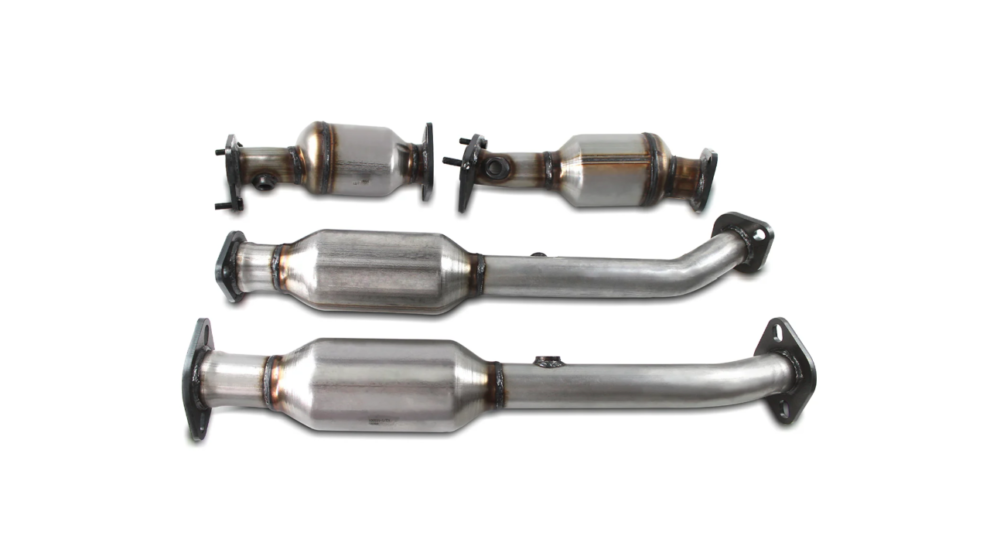What is a Three Way Catalytic Converter? It is a vital component of a vehicle’s exhaust system. It is responsible for reducing harmful emissions from a car and has been a standard feature on vehicles for decades. However, as emissions regulations become more stringent, and as consumers become more concerned about the environmental impact of their vehicles, the future of three way catalytic (TWC) converter technology is becoming increasingly important. In this article, we will take a look at some of the innovations and advancements that are shaping the future of TWC technology and discuss how these developments will impact the performance and efficiency of catalytic converters in the years to come.
One of the most exciting advancements in TWC technology is the use of alternative materials. Currently, the majority of three way catalytics converters are made from precious metals such as platinum, palladium, and rhodium. These metals are not only expensive, but they are also rare and subject to price volatility. To mitigate these issues, researchers are exploring alternative materials such as ceramics and nano-structured materials that can provide similar catalytic properties at a lower cost. For example, researchers are developing ceramics that can be used to create TWCs that are more durable and can withstand high temperatures.
Another promising area of innovation in TWC technology is the development of more efficient designs. Currently, TWCs are designed to remove three types of harmful emissions from a vehicle’s exhaust: carbon monoxide (CO), hydrocarbons (HC), and nitrogen oxides (NOX). However, these emissions can be difficult to remove and the current design of TWCs can result in high energy losses. Researchers are exploring new designs that can reduce energy losses and improve the overall efficiency of three way catalytic converters. For example, they are developing three way catalytic converters that use plasma technology to create a high-temperature, high-speed reaction environment that can effectively remove all three types of harmful emissions.
The use of alternative materials and more efficient designs is expected to have a major impact on the performance and efficiency of three way catalytic converters in the years to come. These innovations will not only make three way catalytic converters more cost-effective, but they will also increase their durability and improve their ability to reduce harmful emissions. In addition, these advancements will likely make three way catalytic converters a more attractive option for automakers as they look for ways to meet increasingly stringent emissions regulations.
One of the key benefits of TWC technology is that it is a “one-size-fits-all” solution for reducing harmful emissions from a vehicle. This is because three way catalytic converters are designed to remove three types of harmful emissions, and they do not require any special modifications or adjustments to work effectively. As a result, three way catalytic converters are a cost-effective and flexible solution for reducing harmful emissions from a vehicle.
Despite the many benefits of TWC technology, there are some limitations to its use. One of the biggest challenges with three way catalytic converters is that they can become clogged with contaminants over time, which can reduce their efficiency and effectiveness. This can be a major problem, especially in areas with high levels of air pollution. To address this issue, researchers are exploring new technologies that can detect and remove contaminants from three way catalytic converters, such as the use of robotic systems that can clean three way catalytic converters in real-time.
Another potential challenge with three way catalytic converters is that they can be damaged by high temperatures and corrosive gases, which can reduce their efficiency and effectiveness. To address this issue, researchers are exploring the use of materials that can withstand high temperatures and corrosive gases, such as ceramics and nano-structured materials. These materials are not only more durable than traditional TWC materials, but they are also more cost-effective and flexible.
In conclusion, the future of three way catalytic converters is bright, with many innovative technologies and advancements being explored. From alternative materials to more efficient designs and simulations, researchers are constantly working to improve the performance and efficiency of three way catalytic converters. With these innovations, three way catalytic converters will continue to play a critical role in reducing harmful emissions from vehicles and protecting the environment.








